Around 1900, a small watch factory was built at Rue des Roses 2. This little cottage with a factory wing was soon augmented by an ornate Beaux-Arts factory befitting a captain of watchmaking like Ernest Degoumois. This was then expanded for dial maker Fluckiger and both buildings were expanded or replaced in the 1950s. Then a modern office building was added in place of the original mansion on Rue du Stand, and this became home to Cartier Group in the 1980s. Thus, this single factory complex in Saint-Imier exemplifies the various architectural trends seen in 20th century watchmaking.

Les Grandes Fabriques d’Horlogerie de Saint-Imier
This is part of a series of posts about Les Grandes Fabriques d’Horlogerie de St Imier. Due to the detailed and complicated research required, it will likely take months to complete, so please subscribe to the Grail Watch newsletter to be kept up to date!
- Introducing the great watchmaking factories of Saint-Imier
- The Evolution of Watchmaking Architecture: Rue des Roses 2 and Rue du Stand 35
- Excelsior Park: Usine du Parc
- The Rise of Mass-Produced Watches at Les Longines, Saint-Imier
- From Atelier to Factory: Usine Centrale, Saint-Imier
- Droz and Degoumois: Berna Watch Factory
- Rue de la Clef 44: Fritz Moeri’s Moeris
- The Rise and Fall of Leonidas and the Beau-Site Factory
- Gygax & Meyer
- Schweingruber
- Smaller Factories of Saint-Imier
Each of these factories has a story to tell, both about the products produced there and the watchmaking industry at the turn of the 20th century. We will explore the transition from home to factory, the rapid rise of corporations, the transition from water and steam to electric power, the great Jeanneret family, and more!
The Construction of Rue des Roses 2 in 1900

The little factory at Rue des Roses 2 might look like a house, but it was built for watch production. First opened in 1900, the same year it was featured on our postcard, the T-shaped wooden structure featured two stories of production space. It was typical for smaller “in-town” watchmaking factories to fit in with the residential architecture that surrounded them, even as massive industrial factories were being built on the surrounding farmland.
We can tell that Rue des Roses 2 was purpose-built because of the line of tall and closely-set windows with shades above them, as well as the narrowness of the production wing. This style of windows remains a signature of watchmaking factories today, and a walk around Saint-Imier, Le Locle, or La Chaux-de-Fonds reveals many such buildings. Even the most modern factories rely heavily on natural light, and most include angled shades outside.
The image of Rue des Roses 2 on the postcard also shows the street sloping downward from the door, and this was certainly true of the building itself: The factory block is just northwest of one of two main plazas in Saint-Imier, Place du Marché, and is just at the base of a hill above the town. The funicular to Mont Soleil is just above the factory, and the street rises so quickly that the current parking lot for the complex would be situated above the roofline of the original building.
The same block also included a large mansion, built prior to the 1857 Plan d’Alignement with a smaller building behind it, likely a stable. This was one of two well-known mansions on Rue du Stand, which ran along the north side of the Place du Marche to an estate (“Le Stand”) a short distance west. The block was bounded on the east by Rue du Manége, which lead to a riding school called Le Manége, predecessor to a Saint-Imier landmark. Rue de la Citadelle (shown on the north side) was never built as intended, though it also appears on the 1883 Plan d’Alignement. Instead, Manége would take the name Rue de la Citadelle in 1953.






The narrow lane on the western side of the parcel would become Rue des Roses. This street gained importance as more housing was constructed to the west of it, along with new streets. And of course it would be the namesake street for our factory.
The western side of town was rapidly growing at that time, and watchmakers, who had previously been clustered between Place du Marché and Place Neuve, began building further out. This is evident when examining photos and drawings of the area before and after the turn of the century, with new buildings appearing on an annual basis. Indeed, this rapid growth helps to date those photos, with new landmarks added at known points. For example, a Christian Catholic Church would be built on Rue des Roses, just behind the factory, in 1912, and this steeple is obvious on nearly every photo of the town.
My search through classic postcards and photos uncovered two images of the location just before the factory was built. The hand-colored photo reproduced below is the easiest to see. It shows the mansion and stable, looking southeast, with an open area of grass and trees where the factory would be built. The wall and shed in the foreground mark the proposed course of Rue de la Citadelle and prove that it was not constructed.
The first building constructed on this land was the Rue des Roses 2 factory shown at the top. It was seemingly unrelated to the existing mansion, and appears to occupy just one of three separate tracts of land on the block. The factory must have had a high profile to be featured on the Tir Cantonale postcard so shortly after construction!


The architecture of the new factory certainly matched the surrounding buildings. This made it somewhat difficult to spot at first, though once we know where to look we can spot it in over a dozen photos. Its first appearance is in a postcard dated January 27, 1901, and it is listed twice in the 1900 edition of Indicateur Davoine. This puts a rather definitive date on the construction that year.
Note that Rue du Stand was renamed Rue Pierre-Jolissaint in 1942, after an important local politician credited with bringing the railroad line to the town. Thus, Rue du Stand 35 would be renamed Rue Pierre-Jolissaint 35, still the address today.
The Watchmaking Cottage: Walter Gebel
Two watchmakers occupied the building at Rue des Roses 2 in 1900: Ernest Degoumois and Walter Gebel. Although both were notable at the time, it is Degoumois that is best remembered today. But we shall deal with Gebel first, since it is a shorter story.

Walter (sometimes spelled Walther) Gebel was a watchmaker active at least as early as 1886 in Saint-Imier. His workshop was located at Rue du Stand 254, further out towards Le Stand. Later re-numbered as Rue du Stand 25, this large building still stands at the corner of Rue de la Brigade. His address changed to Rue Neuve 20 in 1896, but this may have simply been another entrance, as this address corresponds to the same building!
Gebel produced watches and movements for export. An 1895 advertisement lists so-called “Boston” and “World Watch” models, Lépine and savonnette, with 18 and 20 ligne movements. It also claims that Gebel specializes in watches for the Sweden and Norway market. This ad uses the alternate spelling “Walther” rather than “Walter” as seen later.
Walter Gebel’s Saint-Imier workshop was liquidated and sold by the bankruptcy court in Courtelary in December 1899. This included all of the machinery and watch components. It is not clear wither this was before or after he moved in to the Rue des Roses 2 factory, but the fact that he is only listed there in the 1900 edition of Davoine suggests the latter. It is even possible that Gebel was the originator of this factory and Degoumois was the buyer.
What we can say for certain is that Gebel established a new watchmaking workshop in Renan by 1906 and later moved to Sonvilier. But this too is listed as bankrupt as of January 16, 1912.


The Watchmaking Mansion: Ernest Degoumois
The little watchmaking cottage was quickly expanded by the other occupant of Rue des Roses 35. Ernest Degoumois began making watches in Saint-Imier by 1869. His address is first listed in Indicateur Davoine in 1890, located on Rue du Temple, and was relocated to Rue du Stand 240 (which is essentially the same street but further west) by 1893. Given the proximity of Degoumois and Gebel to each other and to Rue des Roses 2, perhaps they collaborated in the construction of the new factory.

Degoumois initially produced watches under the Bonheur and High-Life Watch brands, but his signature was an ultra-thin pocket watch. This was patented in 1901, and was quickly copied by Ernest Stutzmann & Roth. Degoumois sued this other Saint-Imier firm and won a judgment against them in 1903.
In 1895, Degoumois is listed at Passage des Jardins 11, an address directly across Rue des Roses from the subject of this artlcle. After a brief relocation to Rue des Marronniers 60, two blocks to the south, Degoumois is the first company listed at Rue des Roses 2. Interestingly, my 1899 edition of Indicateur Davoine has this address crossed out, with the word “Stand” written by hand!
Shortly after Gebel left, the little factory became a complex, with a grand new Beau-Arts building built on Rue du Stand next to the existing mansion. Seen in the Degoumois advertisement at right, this signature building, Rue du Stand 35, literally overshadowed the Rue des Roses 2 factory. The artist of this engraving added elaborate gardens and a fountain in front of the building, but it does not appear that these actually existed. This was typical of such engravings at the time, as was the plume of smoke from the steam boilers.
The Rue du Stand factory must have been a landmark in town, appearing in two postcards from around 1906 and 1908. The 1906 postcard, in color, also highlights the recently-added electric power lines, though both of the factory buildings used steam power at that time. Note the tall arched windows of the factory wings: these are typical of factory architecture in the early part of the 20th century.

Degoumois quickly outgrew the new building, however, and listed the factory for sale by October 1, 1908. The listing shows that it can accommodate 150 workers, a formidable size considering that the population of Saint-Imier at that time was just 7,944. Degoumois relocated the company to the Berna Watch Co. (formerly Droz & Cie.) factory a few blocks away at Rue des Marronniers 20. He soon merged the companies, reassigning his patents to the new Berna Watch Co. on December 28, 1908.


Ernest Degoumois continued to innovate. After registering a few more patents, he rose to become chairman of the board of Montres Berna. The combined company occupied the Droz & Cie. factory at Rue des Marronniers 20 through the 1930s before being acquired by Constant Jeanneret-Droz and merged with his firm, Leonidas. The story of Jeanneret-Droz, Leonidas, and Berna is told in another article in this series. Ernest Degoumois died in 1941 was said in his obituary to have “played a leading role” in watchmaking in Saint-Imier.
The Shared Factory Complex: Ferdinand Bourquin, Chopard & Saucy, and Reymond-Rod & Aeschlimann
After the departure of Walter Gebel, Degoumois shared the factory for a few years with various smaller watchmakers. First was Ferdinand Bourquin, heir to a celebrated watchmaking family. Bourquin soon built his own factory and registered one of the most important brands in Saint-Imier watchmaking! Other tenants of Rue des Roses 2 in these first few years included tool maker Chopard & Saucy and chronograph maker Reymond-Rod & Aeschlimann.
Julien Bourquin began making watches in 1844, and was succeeded by 1895 by his son. Like many of his generation, Ferdinand Bourquin saw the opportunity in mechanization and branded watches. He soon established his first brand name, “La Populaire,” and moved into the space at Rue des Roses 2 vacated by Gebel. There he produced 13, 16, and 19 ligne watch movements, including chronographs and complicated watches. But Bourquin was thinking bigger than this!

By 1902, Ferdinand Bourquin registered a new brand for chronographs and stop watches: Leonidas. These would soon be produced in a new factory across town, named for the street on which it was located. The growth of Leonidas is covered in another article about Fabrique d’Horlogerie Beau-Site, but Bourquin himself would not live to see it. He died unexpectedly in 1905, leaving the development of Leonidas to Constant Jeanneret-Droz, youngest son of the rival Jeanneret family.
Bourquin is listed at Rue des Roses 2 only in 1901, 1902, and 1903.
More space at the factory was taken by Chopard & Saucy, a maker of various watchmaking tools. This company appears there in 1902 with their cylindrical screwdriver sold under the brand name “Eureka” but is no longer listed after 1903.

We have a gap in Indicateur Davoine until 1908, by which time Rue des Roses 2 is occupied by specialty chronograph maker Reymond-Rod & Aeschlimann, producer of the Sonnenberg brand. It appears that Emile Reymond-Rod and Paul Sandoz-Reymond combined their patents under the Sandoz Watch Company, also of Saint-Imier.
From Watchmakers to Component Suppliers: Ruch, Straumann, and Nivarox
After The Great War, watchmaking in Switzerland was hit by overproduction, dumping, and foreign competition. The American-style mass manufacturing of watches, exemplified by Longines in the Saint-Imier valley, resulted in far more product than consumers demanded. This effectively wiped out the sort of watchmakers that occupied the little factory complex around 1920. But new tenants were quick to occupy this factory space, and this leads to the next great wave of watchmakers and expansion.
Between 1919 and 1925, the “mansion” along Rue du Stand with its elaborate facade was reconstructed into a more useful three-story factory building. The appearance of the windows on the first two stories suggests that it was merely expanded upward, not replaced outright. And this is understandable as the building was then less than 20 years old!

The factory at Rue du Stand 35 was occupied by the Agassiz Watch Co. by 1920, which moved from Rue des Roches 2. The company would relocate within the complex to Rue des Roses 2 in 1924. After a decade there, the company is no longer seen after 1934. Another brand, Montres Sportex, was founded at the Rue des Roses 2 factory in 1933, but the company relocated after the following year to Rue Francillon, the town’s main street. This was typical of the next boom of watchmaking in the 1930s, but they would be the last watch brands to use the factory.

Instead of making watches, the factory at Rue du Stand 35 would become one of the premier component suppliers. W. Ruch & Co. was founded in Saint-Imier in 1929 to produce hairsprings under the “Berna” name. This may have been related to the Berna Watch Co., which absorbed Ernest Degoumois’ operation in 1909, or may simply have been named for the Canton.
In 1935, Albert Ruch partnered with the great Reinhard Straumann to produce a new anti-magnetic hairspring at Rue des Roses 2. Straumann was a brilliant inventor and was previously technical director at Thommens Uhrenfabrik in Waldenburg, maker of Revue watches. But Ruch was in poor health and died in December of that year at the age of 64, with his son Werner taking over.
Although the W. Ruch company continued producing hairsprings as part of ASUAG, the former partnership with Straumann became known as Nivarox SA in 1937. It remained in the Rue des Roses complex until 1944, when it was relocated to Rue de Tramelan, in the old hospital building. Nivarox would remain there into the 20th century, when it was consolidated by Swatch Group in Le Locle. Reinhard Straumann founded a technical institute and continued to be the custodian of the Nivarox formula for decades, and this business is today owned by the Meylan family along with H. Moser & Cie.
A Modern Factory: Fluckiger & Cie.
The best-known tenant of our little factory was already present there as early as 1913, but was overshadowed by the branded watchmakers that occupied it in the early part of the century. Yet it was this company, Fluckiger, that would transform the factory throughout the 20th century.

Image: Jura bernois Tourisme
Zélim Jacot was a French dial maker starting in 1860. He moved from Besançon to Boudeviliers to Sonvilier before arriving in Saint-Imier in 1884. Jacot had become a supplier for Longines in 1872, producing fine enamel dials. Fritz Flückiger soon took over the business, having already become a partner in the Saint-Imier venture. He died in 1908, and his widow relocated the company to Rue des Roses 2 by 1913.

Fluckiger would become the primary tenant for the factory complex in the 1930s, and would remain at this location for decades. Business was good for Fluckiger, and the dial maker soon needed more space. The west wing of the building was expanded along Rue des Roses by 1941, nearly touching the still-standing Rue des Roses 2 cottage.
The new factory wing featured arched windows that matches the original “mansion” on Rue du Stand. But they lack the thick lintel seen on the original 1906 building and instead have a thin frame like the 1920s expansion.
Around this time Fluckiger also added a portico along Rue du Stand, as seen in the un-dated photograph above. One can also see the name of the company added above the first floor, and this would become a familiar sight for Saint-Imierans, being in direct line of sight from the main street (Rue Baptiste-Savoye) and the entrance to the ubiquitous Migros supermarket. Oddly, this view is blurred out in Google Maps!
Just after World War II, Fluckiger further extended this new wing, knocking down the original “cottage” but leaving its factory wing. Looking at the photos below, one also gets a sense of the scale of the factory by 1950. Fluckiger was one of the great dial makers at this time, and this factory would produce high-end dials for most famous names in the post-war period.


Considering the size if the Rue des Roses wing, it is surprising to see what came next: A much-larger expansion along the rear of the parcel. By 1960, a modernist four-story wing was constructed, and this was expanded all the way from Rue des Roses to Rue de la Citadelle by 1976. This massive block features square windows and plain styling more in keeping with the modernist 1970s. It also added an entrance and bridge to a new parking lot on Rue des Roches above the factory, reflecting that many employees now arrived by car and likely lived outside Saint-Imier.



Image: Green Slash, Wikimedia Commons

Image: RealAdvisor.ch

The Fluckiger company continued in operation at Rue Pierre-Jolissaint 35 into the 21st century, supplying some of the best-known companies in watchmaking. Fluckiger relocated production through the 1990s to a more modern facility on the outskirts of Saint-Imier. When the company was purchased by Patek Philippe in 2004, Fluckiger finally vacated the factory complex after over 90 years at the old Rue du Stand factory.
A Modern Office: Cartier Group

Between 1970 and 1976, the mansion at Rue Pierre-Jolissaint 37 was demolished to make way for a modernist office building. This three-story structure featured banded windows and concrete styling in keeping with trends of the time. No doubt the company managers thought this more comfortable and progressive than the old-fashioned building next door.
Fluckiger & Fils celebrated their 100th anniversary in 1985, as noted in contemporary reporting in Europa Star. But the company would soon vacate this modern building in favor of another tenant exemplifying the changing watchmaking industry.
In 1989, Cartier Group announced that they would consolidate their Swiss operations in the Saint-Imier valley. The company selected the historic Fluckiger building at Rue Pierre-Jolissaint 37 for their business operations, while building a new production facility in nearby Villeret.

Cartier Group had acquired 60% of Baume & Mercier and Piaget in 1988 and was fast becoming one of the first modern watch and luxury holding companies. The company was renamed Vendôme Luxury Group in 1993 and was merged into Richmont Group in 1997, shortly after acquiring Vacheron Constantin and Panerai. Thus, the center of activity moved west to Le Sentier (home of Richemont’s Jaeger-LeCoultre) and Geneva. The company left Saint-Imier by 1992, though Richemont’s Montblanc remains in Villeret thanks to the acquisition there of Minerva.
The office building was used by a series of professionals through the following decades until it was taken on by CEFF in 2017. This is the successor to the original Ecole d’Horlogerie of Saint-Imier, which dates back to the 19th century. The vocational school also occupies other local landmarks including the Moeris factory, which is the subject of a later article in this series.
As noted, Fluckiger continued in operation in the main building (Rue Pierre-Jolissaint 35) through at least 2005 before completely vacating. It was later occupied by other companies in the horology space, with sapphire glass specialist Econorm using the building from at least 2013 to the present day.
The factory is also the home to independent watchmaker Zeitwinkel, which appears to operate in the rear portion of the complex. This was the original site of Degoumois’ Rue des Roses cottage factory, and this makes Zeitwinkel a fitting tenant!

Image: Zeitwinkel
The Grail Watch Perspective: The Evolution of Watchmaking Architecture in the 20th Century

Image: RealAdvisor.ch
It is remarkable how much we can learn from the history of a simple watchmaking factory. From the original “cottage” factory at Rue des Roses to the modernist office building at Rue Pierre-Jolissaint 37, “the Fluckiger factory” exemplifies the many forces that shaped watchmaking in Saint-Imier and beyond over the last century. But even without this research, one can see this evolution come alive in the shape of the windows, the construction of the walls, and the curious arrangement of the complex. It’s a shame that the original cottage was razed in the 1940s, but the rest of the site speaks volumes about the development of the industry.
It is fitting that it houses Econorm and Zeitwinkel today, as they exemplify the advanced materials and hand watchmaking that have always been present on the site. With a great deal more space available, perhaps this factory will be the home of the next great watchmaking company in the future!
Returning to our postcard, the next article in this series will focus on Usine du Parc, home of Jeanneret Frères in 1900. This factory typifies the mechanization and industrialization of watch production, being built to harness steam power. Yet it is also one of the most overlooked buildings in Saint-Imier, as we shall see!
Chronology of Watchmaking Tenants
While I was researching this factory complex, I uncovered many of the watchmaking-related tenants. However, I no doubt missed some of them, and I would welcome your feedback!
- Rue des Roses 2
- Ernest Degoumois (1900-1903)
- Walter Gebel (1900)
- Ferdinand Bourquin (1901-1903)
- Chopard & Saucy (1902)
- Reymond-Rod & Aeschlimann (1908)
- Henri Guyot (1913-1922)
- Vve Fritz Fluckiger (1913-1924)
- Fern Fluckiger (1916-1922)
- Guyot & Co. (1923-1924)
- Agassiz Watch Co. (1924-1935)
- H. Leuenberger (succ. de Gerber) (1927-1928)
- Montres Sportex (1933-1934)
- W. Ruch & Cie. Straumann (1935-1937)
- Nivarox SA (succ. de Ruch) (1938-1944)
- Rue du Stand 35/Rue Pierre-Jolissaint 35
- Ernest Degoumois (1903-1908)
- Agassiz Watch Co. (1920-1923)
- P.-R. Pascal (1924)
- Fluckiger & Cie. (1924-2005)
- Fern Fluckiger (1924)
- Econorm (2010s)
- Zeitwinkel (2010s)
- Rue Pierre-Jolissaint 37
- Fluckiger & Cie. (1980s-2005)
- Cartier Group (1989-1992)
- CEFF (2017-present)



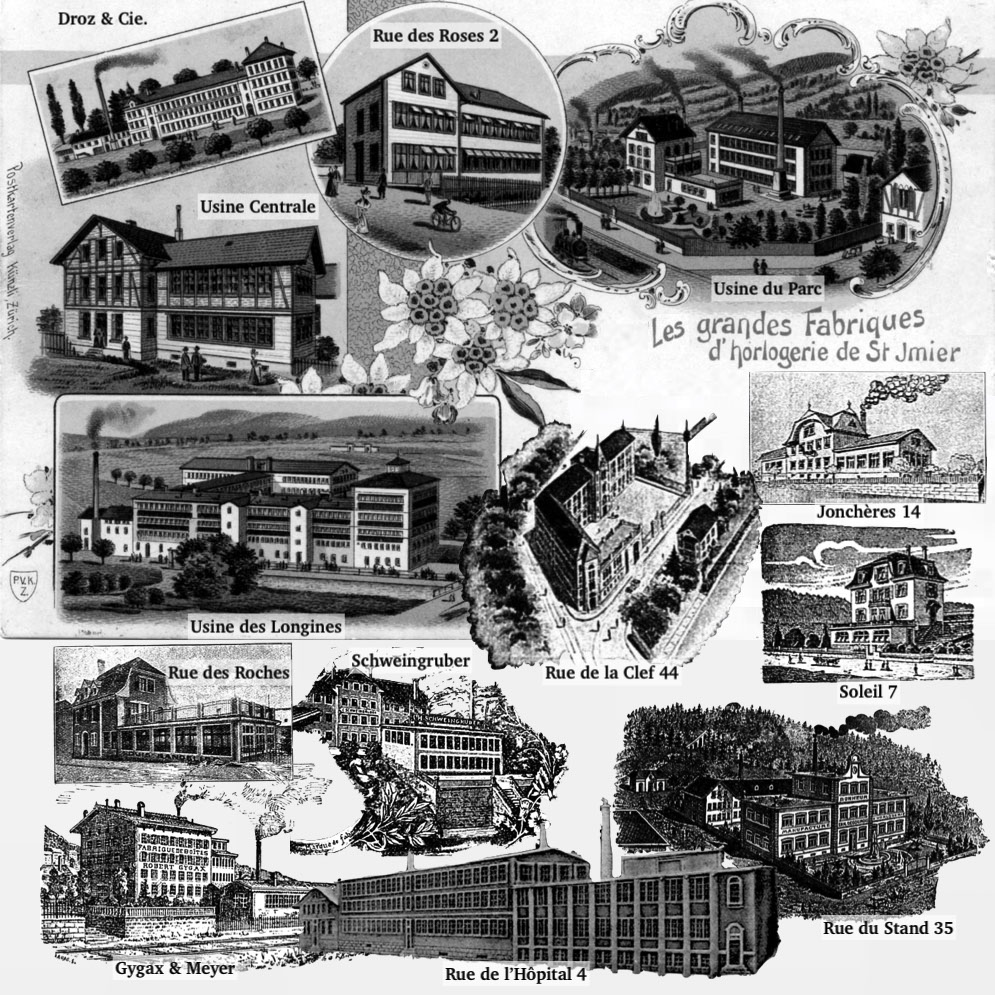

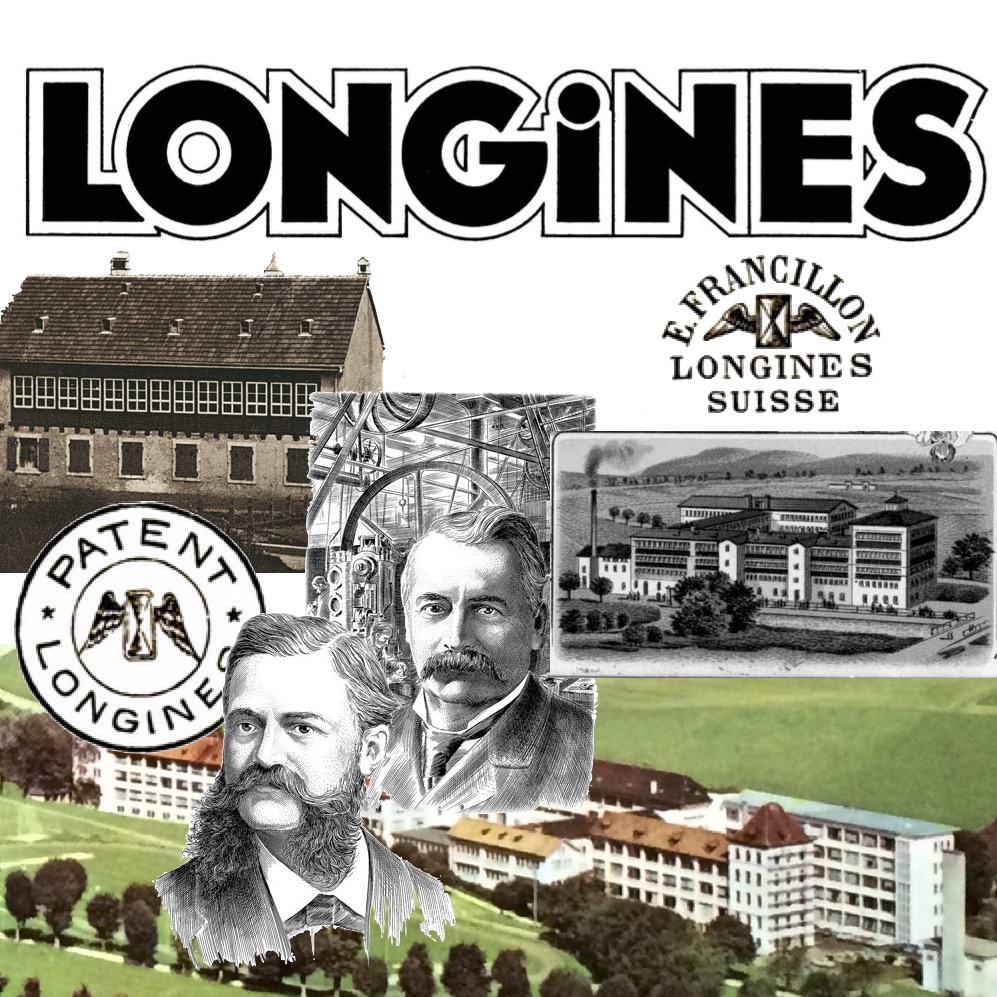
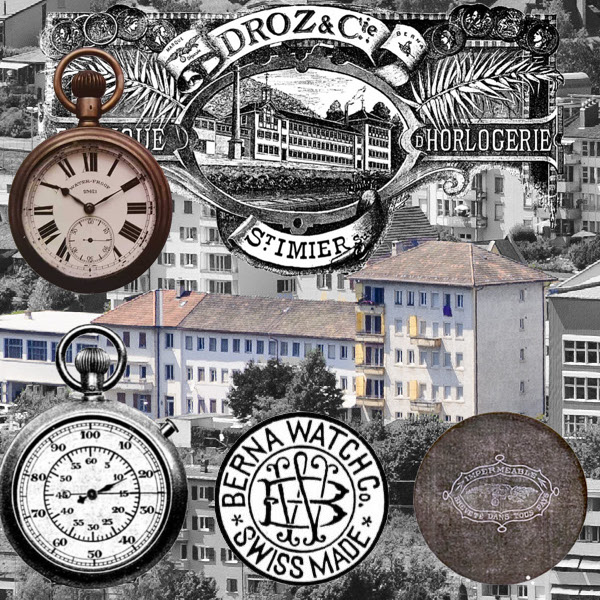
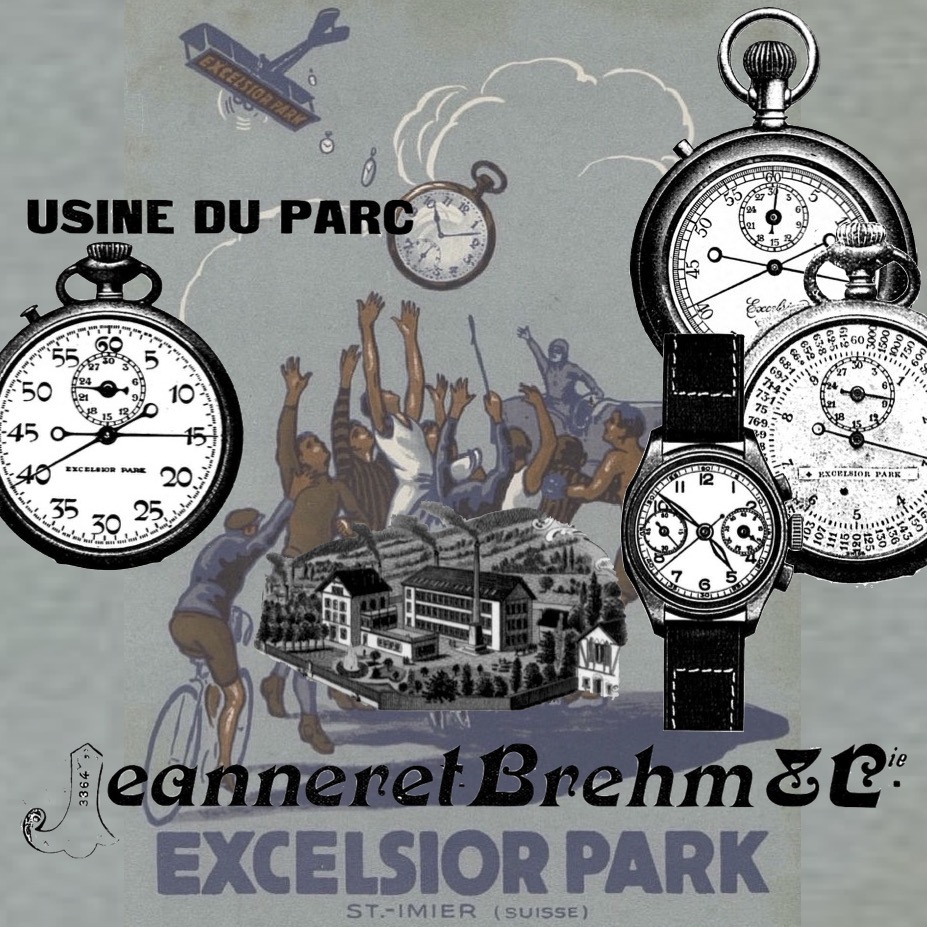
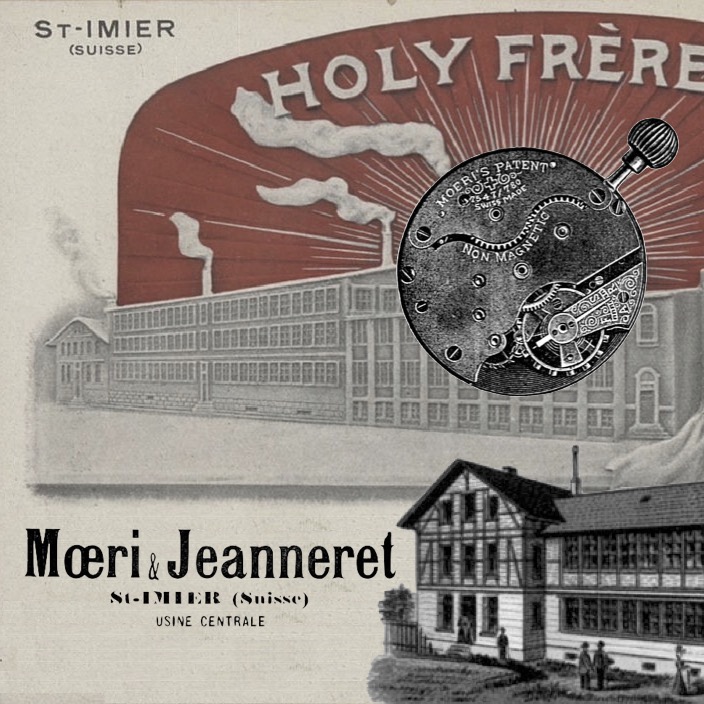
Leave a Reply